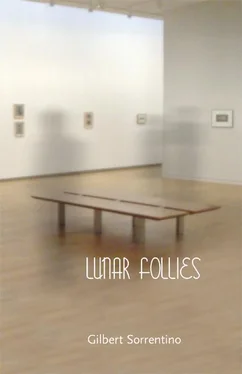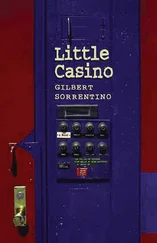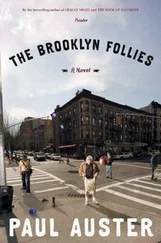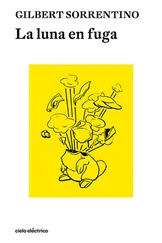A long flat slab of the finest marble from the celebrated although by now wholly exhausted quarries of the small Tuscany village of Sfogliatelle is balanced, on one edge, elegantly if precariously, atop a volume of dead poems of some local notoriety. Their floating vocables urge new ways of seeing if not reading, of reading if not seeing, or of thinking a little if neither reading nor seeing. So the placard above the receptionist’s desk states: said placard and desk depend from the saccade-like nervousness and twitchiness of the slab’s darker side. Bolted to the slab are magazines that feature some of the finest writers of our time, but not, thank God, all of them. Many of them are in collaboration on contemporary thoughts: “The Future of the Village”; “Frozen Custard Rediscovered”; “How a Tough Street Kid Became an Oscar Contender”; and many others. Their prose, which is refreshingly irreverent, is the norm. The magazines have been sprayed with a faux-gold lacquer which has then been “sown,” while still wet, with cigarette stubs, ashtrays, insects, a small Burundi vase, a report detailing the bad news for an unknown yet beloved person as to his incurable disease, or, perhaps, diseases (the report is in the demotic Greek spoken by Weehawken diner owners), many excellent words from here there and everywhere, a sepia-tone photograph of a small glade in Van Cortlandt Park in the Bronx, smeared with what may be brown paint, Fox’s U-Bet chocolate syrup, or excrement, and a glob of a truly ghastly crème de cervelle, once served to a Princeton alumnus on the occasion of his life. A small rectangle of stiff white cardboard is stapled to the wall and reads: DON’T BELIEVE THE POOR. The slab lists slightly to one side and is bathed in the soft light that is, so we have been told many and many a time, the hallmark of New England summers. A cheerful video loop reveals a smiling youth gesturing toward what he says, or, rather, shouts, is San Francisco. “WHAT WEATHER!” is a phrase that he repeats over and over again. The slab turns occasionally, somewhat like a scena ductilis. But only at certain hours, and not so anyone would notice. Then there is the music that happenstance, as it will, directs, jingle jingle jingle. And all is rendered in a brilliant Lydian translation.
Just opened: At the Kangol-Polo Galleries: You won’t go far wrong with this judiciously selected, and soberly, but not stuffily authoritative exhibition of what has recently come to be called “ingenuous” art, or, occasionally, “crippled” art. The show goes a long way toward sorting out the lines and planes, not to mention the arcs and tangents, large circles and even complex rhomboids of influences, affiliations, and imitative procedures to be discerned within this difficult, often misunderstood, and, at times, hopelessly muddled school. Everything is placed simply, even puritanically, in the galleries’ spacious rooms, and the whole takes up, quite comfortably, the entire second floor of what was once a SoHo firetrap. The works are arranged in shrewd juxtapositions and canny alliances, so as to allow the viewer to discover how these iconoclastic fringe artists and artisans and their art and artisan products play off each other. The great Rube Chang, for instance, and Marco “the magnificent” Globus present three semi-collaborative works (“Blue Asters and Paperback,” “Edward Van de Fugger, Christian,” and “Lieutenant Chip Mainwaring Abusing Himself”), which remind one of the early red-clay-and-torn-denim “cut-downs” made by George, “the soupreem master of magikk,” in his Lake Jango garage, as well as the “moron collages” that were discovered a decade ago in a corncrib on Jubal Chamborizee’s property. (Chamborizee, also known as Lord Chimborazo or Sir Henry Cotopaxi, was the acknowledged master of sooty-cob annealing, a painstaking process whose subtlest techniques died with him.) Ruth Billbew’s “The Beast from the Stygian Deeps,” “Larry’s Bony Wife, Martha,” and “Ants at a Picnic: Study in Black and Egg Yolk,” are clearly in the same early-ingenuous mode as Duwayne Bushelle, Bushelle Edwards, Mac Brontus and his humming raccoons (Brontus’s droll designation for those who selflessly assist him in his crush-and-burn operations); and her “Vomit in the Doorway,” perhaps the central iconic image of all postwar ingenuous art, and an acknowledged focus for contemporary studies of painterly surfaces, especially in the work of Katz, Thiebaud, and, not surprisingly, Warhol, reminds the most jaded gallery-goer of how sublime the “cripples” can be. The powerful construct, “Leventy-Seven,” by Duke Charlotte La Bushe, startles anew in its position of majestic prominence in a small gallery off the main corridor, as it gestures toward, illumines, and shrewdly “explains” its immediate successors in the fiendishly difficult heavenly-glaze procedure, “Uniform and Chips, with Pastor,” by Whitfield Wamp, “Weightlifters at Prayer,” Fincher Leroy Ellerbing’s last known work, and “Jesus Destroying Pornography,” by an anonymous member of the Southern Baptist Corsairs. The catalogue, informative and entertaining, by the exhibition’s curator, Stanford MacArthur, informs and entertains, indeed, yet helps us to remember that which it is dangerous, much like history and current events, to forget; that art is, at its most sublime, simple, decent, and, as one delighted visitor to Kangol-Polo was overheard to say, “easy on the eyes.”
“Three (or so) segments of a work in complex progress …”
“… but the myth of the frontier has consistently engaged the disarmingly irreverent sophistication of the modern multi-lens camera, of course. Earlier works, like the focus of the interplay as seen in the presentation of the scrims usually associated with the pinhole camera, the nonchalant stance, the thematic array, and the variously colored fluorescents, confront the secondary myth of the iconic cross-cultural artist, as prefigured in the many seminal and provocative essays by a group of distinguished contributing editors, published in the Contemporary Camera Obscura. ‘The nearest star,’ to adduce a well-known remark of the anonymous Gnostic followers of Blake, ‘is much too near,’ profoundly encapsulates the varied philosophies of shared visual interests and loosely Hegelian theoretical vistas, many of them here on display as a group for the first time, allowing students and scholars to spend hours, rather than the usual hurried moments, with objects commonly associated with the tenaciously unyielding subjects herein deployed in ‘ur’-constructions that take as their unifying and irreversible (although subject, always, to aporia) theme the images that are, paradoxically, vital yet moribund. Whereas mechanical tools, e.g., the hammer, the adze, the wood plane, the nathan, the ripsaw, and the blotter, project and valorize the images in the early films of Wynton Marsalis, inescapable filtering of new and little-known earlier works by now-lost ‘outsider’ cinematographers, as presented in varied locations within North American public spaces throughout the fifties and sixties, contradict a haze of pioneering techniques which can transform such mundane instruments into dazzling media installations that relentlessly transgress the cherished Germanic motifs which inoculate, or, conversely, are inoculated by, surprising Baudelairean correspondances; for example, via the imagery of Callahan, Atget, and Adams, cultural topoi, so to speak, that have delighted and outraged the ‘mouse in the dynamo,’ as Bartley Scott put it some years ago, as well, too, as influencing those cinéastes and plasticists who pioneered the fevered pyrotechnics and mysterious and ineradicable film captions that have come to be viewed, with much justification, as harbingers of pure process, emblematic clips heavy with metaphor, and short but multi-layered arguments, not to mention a vertiginous, motile linear perspective and the labile interfaces contemporaneously labeled as ‘technovideo interventions,’ despite their static modes within …”
Читать дальше












